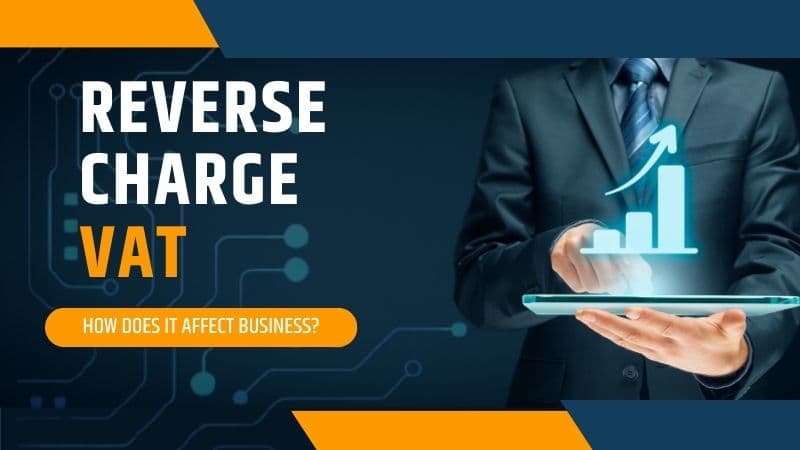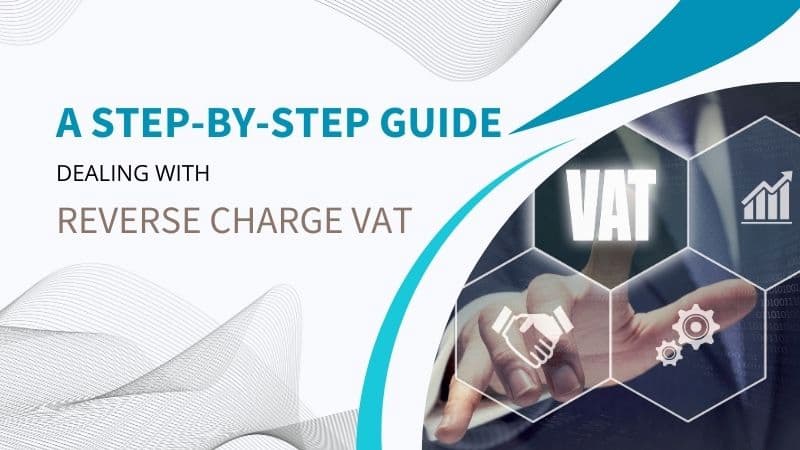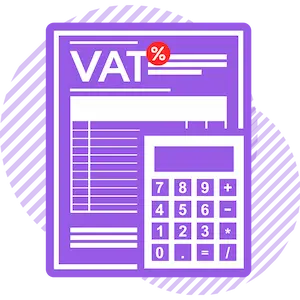Taxation systems may seem complex and overwhelming in today’s interconnected business landscape, yet understanding them fully should not be avoided by business owners or financial professionals – particularly tricky is navigating tax codes such as reverse charge VAT which must not be disregarded but fully understood to comply with legal regulations while optimizing cash flows of companies.
Understanding Value-Added Tax (VAT).
Start off by demystifying Value Added Tax, better known by its acronym VAT. Simply put, VAT is a consumption tax applied at each stage in a supply chain where value is added between production and sale – such as chair production where VAT will be added at each step from raw material acquisition through construction to sale – this approach forms the backbone of UK’s taxation system. You can calculate you VAT using our VAT Calculator
VAT in the UK should never be understated in its importance to government services we take for granted. Not only should fiscal authorities worry about VAT collection and remittance accurately; businesses of all sizes in the UK must ensure accurate calculation, collection, remittance of their taxes in order to avoid incurring substantial penalties that could damage both their finances as well as reputations irreparably.
Overview of Reverse Charge VAT
At this point, let’s turn our attention to Reverse Charge VAT as its signature feature. Whereas VAT typically flows downward through supply chains, Reverse Charge works the opposite way around by having buyers report transactions to HM Revenue and Customs rather than sellers; giving the appearance that goods or services have been sold backwards!
Reverse Charge VAT isn’t widely practiced; instead, its primary application lies within certain sectors prone to VAT fraud such as construction, mobile phone service providers and computer chip suppliers as well as gas and electricity markets. Companies operating within these fields must understand its principles and implementation in order to remain compliant; hence its application becomes particularly vital.
Reverse Charge VAT may seem out of place within the context of VAT’s usual flow, yet it plays an integral part in protecting both fiscal authorities and businesses against VAT fraud. We will explore its purpose and impact within business ecosystem. In addition, we’ll offer assistance when dealing with Reverse Charge VAT so it becomes an easier journey.
The Purpose of Reverse Charge VAT
Once we understand what Reverse Charge VAT is, the next question may arise as to its purpose and implementation: why? This lies within the pervasive issue of VAT fraud: an ongoing challenge which burdens public finances while undermining fair competition among businesses. Common examples include businesses charging VAT but then disappearing before passing it along to HMRC for collection (commonly known as Missing Trader Fraud). Reverse Charge VAT was designed to address this by shifting responsibility of accounting for VAT from seller to buyer as part of an attempt to identify such schemes before it became known – giving businesses less of an opportunity.
Reverse Charge VAT serves as an essential tool to combat tax evasion, protecting government revenues for essential public services while creating a fair business landscape in which all players adhere to the rules.
How Reverse Charge VAT Impacts Businesses

Now let’s consider how Reverse Charge VAT impacts businesses. Revers Charge VAT represents more than just an accounting procedure adjustment; its introduction can have far-reaching ramifications on cash flow management for any organization.
Under the traditional VAT system, businesses collect VAT from their customers and can utilize those funds until it comes time to remit it back to HMRC. With Reverse Charge VAT however, this cash flow advantage is lost, creating additional administrative burdens as businesses must adapt their accounting systems and train staff on how best to apply and report Reverse Charge VAT correctly.
Pricing strategies could need to be revised accordingly. Customers may perceive no difference when VAT is no longer listed separately on invoices; however, its effects could be significant for smaller businesses with narrower margins and margins.
Addressing Reverse Charge VAT: A Step-by-Step Guide
Navigating the Reverse Charge VAT system may seem complex and daunting at first, but don’t worry: we are here to guide you every step of the way. As previously established, this unique rule applies only to specific goods and services and requires customers to pay HMRC directly for VAT collection in order to reduce fraud and ensure accurate collections.
Common goods and services covered under Reverse Charge VAT include building and construction services, mobile phones, computer chips, gas and electricity consumption and emission allowances.
If your business provides any of these goods or services, familiarising yourself with reverse charge is an essential step. Below we have broken it down into easily digestible steps so as to make this tax mechanism less daunting.

Step 1: Determination of Applicability
First step to complying with Reverse Charge rules is identifying whether they apply to your supply. Review HMRC guidelines and understand their application when providing goods or services to customers.
Step 2: Invoicing
Once Reverse Charge VAT has been applied, invoicing your customer with this amount. Unlike with traditional VAT systems, however, they will not pay this VAT directly; rather they must declare and submit it through their VAT return to HMRC themselves.
Step 3: Reporting to HMRC
While HMRC requires your customer to declare VAT, as a supplier you still have reporting obligations. Any amount charged via reverse charge needs to be reported as part of box 1 on your VAT return for that period, along with any other amounts collected during that time.
Your VAT return should include a note explaining the use of reverse charge, which enables HMRC to monitor that it has been accounted for accurately and ensure that no overstatements have occurred.
To successfully navigate the complexities of Reverse Charge VAT, follow these helpful hints:
- Understanding the Rules: Understanding HMRC guidelines and rules applicable to your supply of goods cannot be stressed enough. Familiarize yourself with them for maximum efficiency.
- Keep accurate records: To make reporting easier and avoid complications in the future, keep accurate records for every transaction that occurs. Doing this will help streamline reporting efforts as well as avoid complications in reporting processes.
- Correctly Report VAT: Make sure the VAT collected through reverse charging is reported accurately in your VAT return, since any errors here could lead to penalties and unnecessary complications.
- Reach Out to HMRC: Should any confusion or questions arise regarding tax obligations for businesses, don’t hesitate to contact HMRC and seek guidance and support from them. They are there to support and assist businesses with meeting those responsibilities effectively and responsibly.
Stepping through these steps will not only ensure that your business complies with tax regulations, but will also give you confidence as you navigate the complexities of VAT system.
Conclusion
As we reach the final stages, let us pause to assess Reverse Charge VAT. It may appear complex and overly bureaucratic at first glance, yet its main goal is fairness and accountability in business – making sure everyone follows the rules while protecting vital funding for public services.
By embedding good practices into business operations and staying abreast of updates from HMRC, not only will compliance be ensured but you’ll also increase financial resilience for your enterprise.

